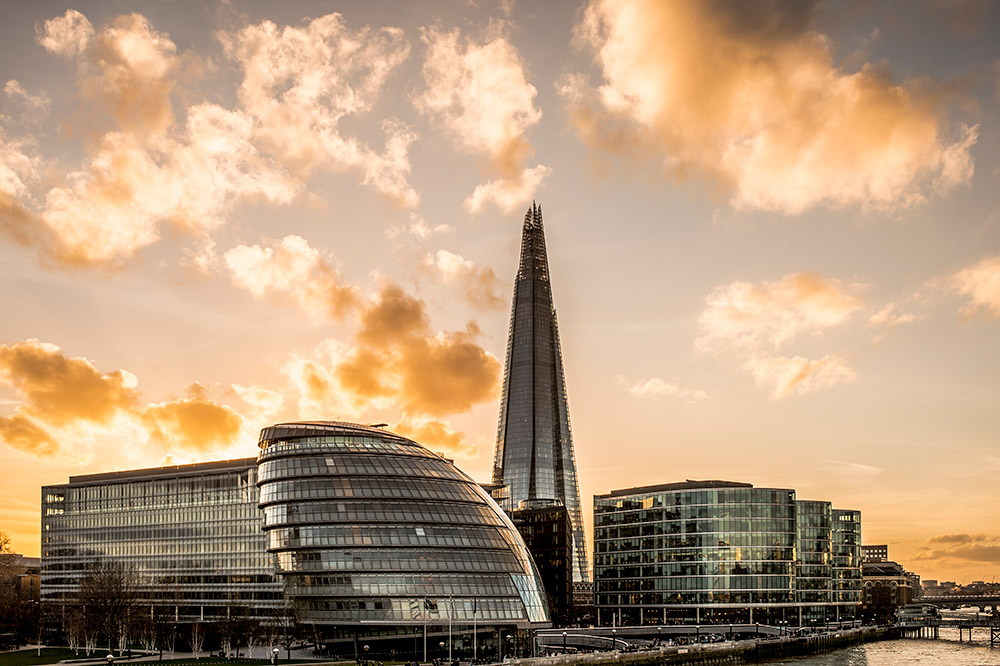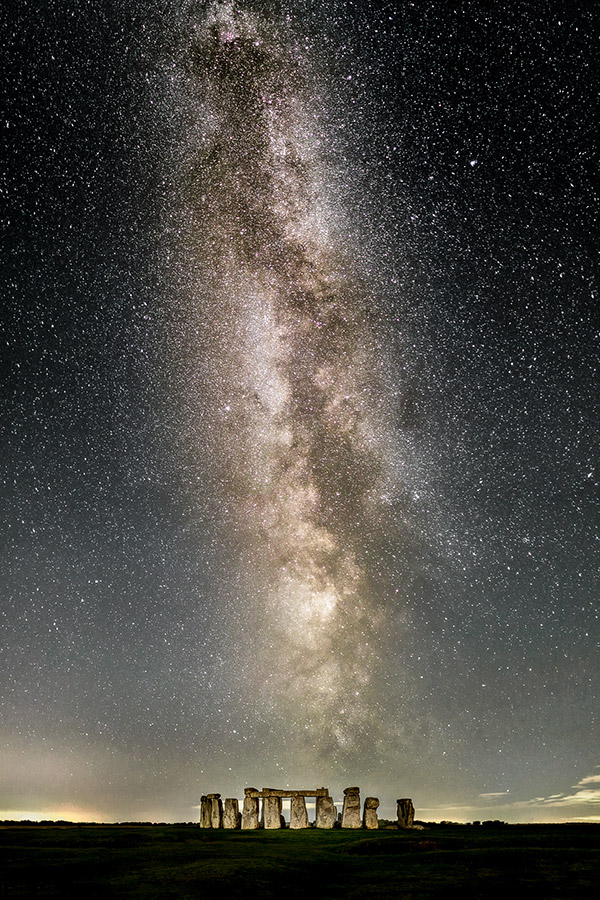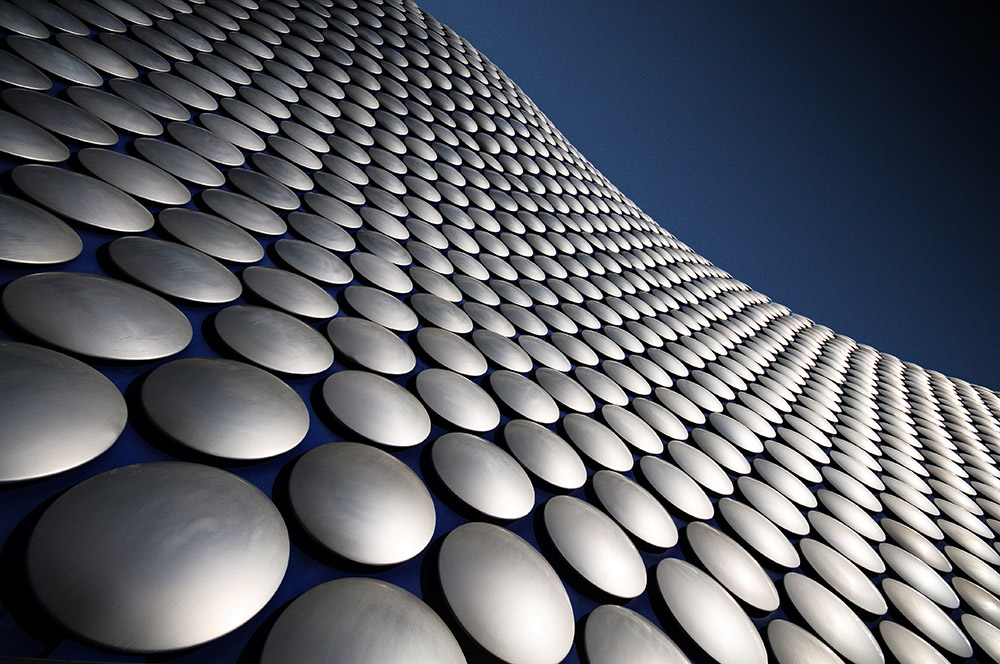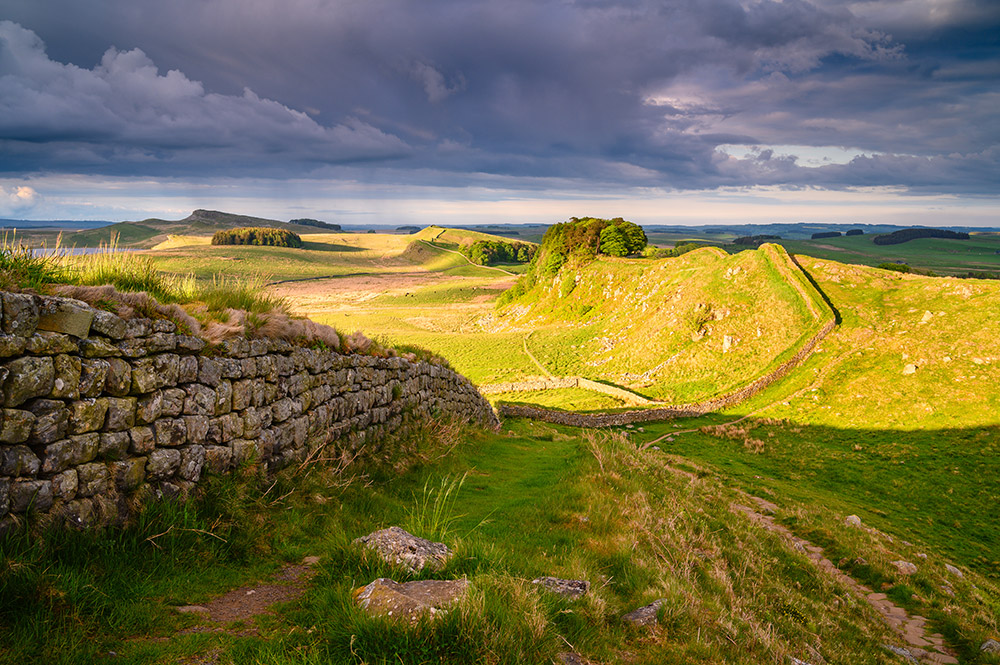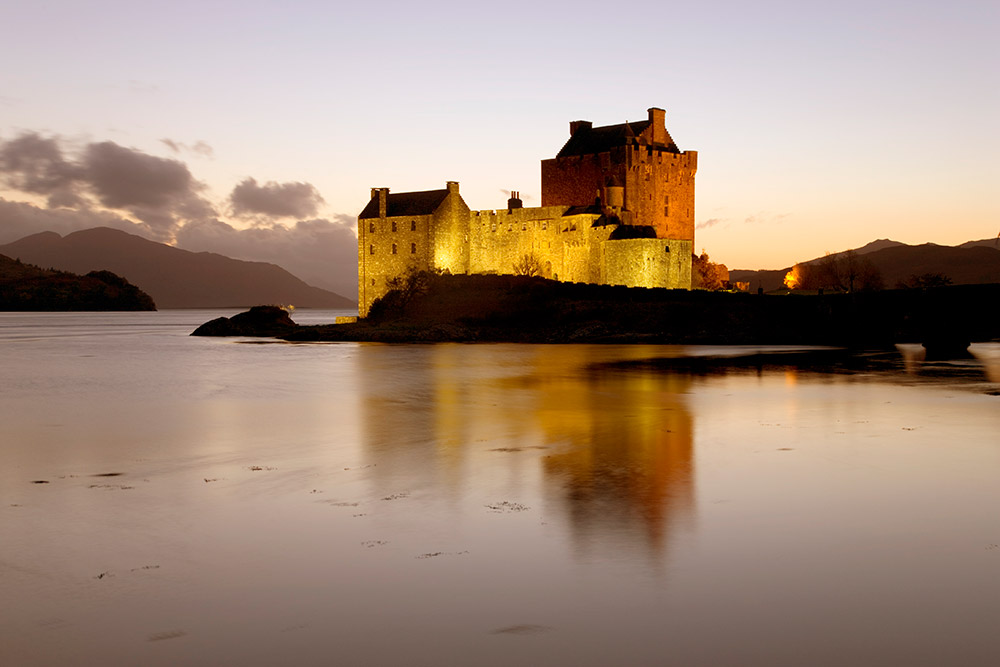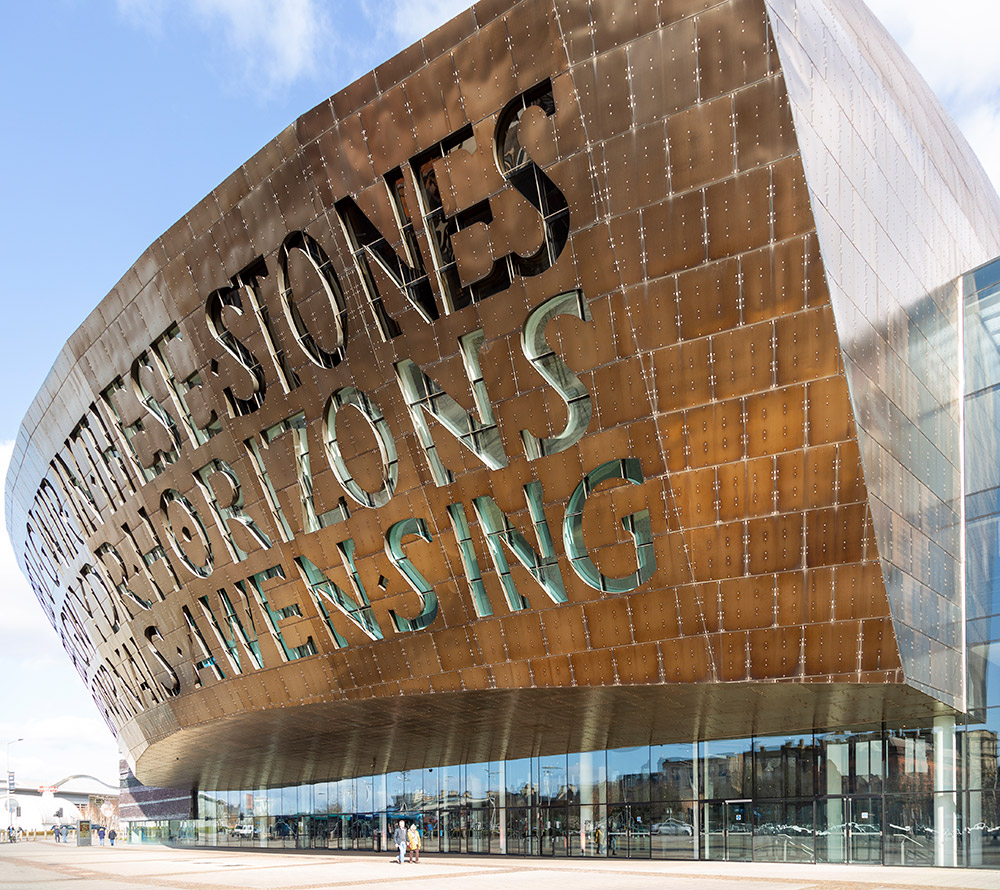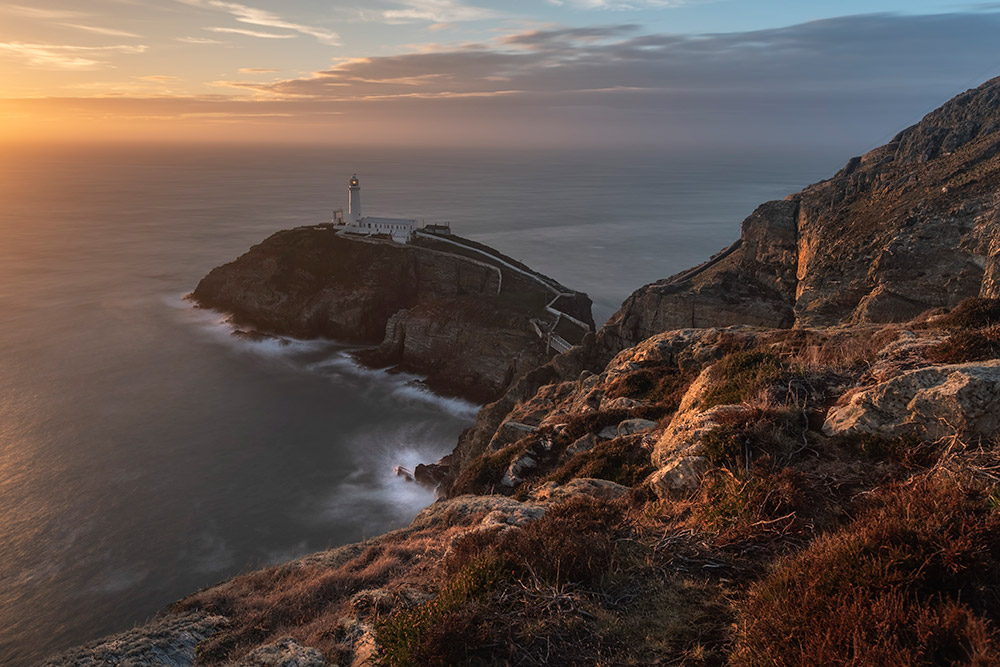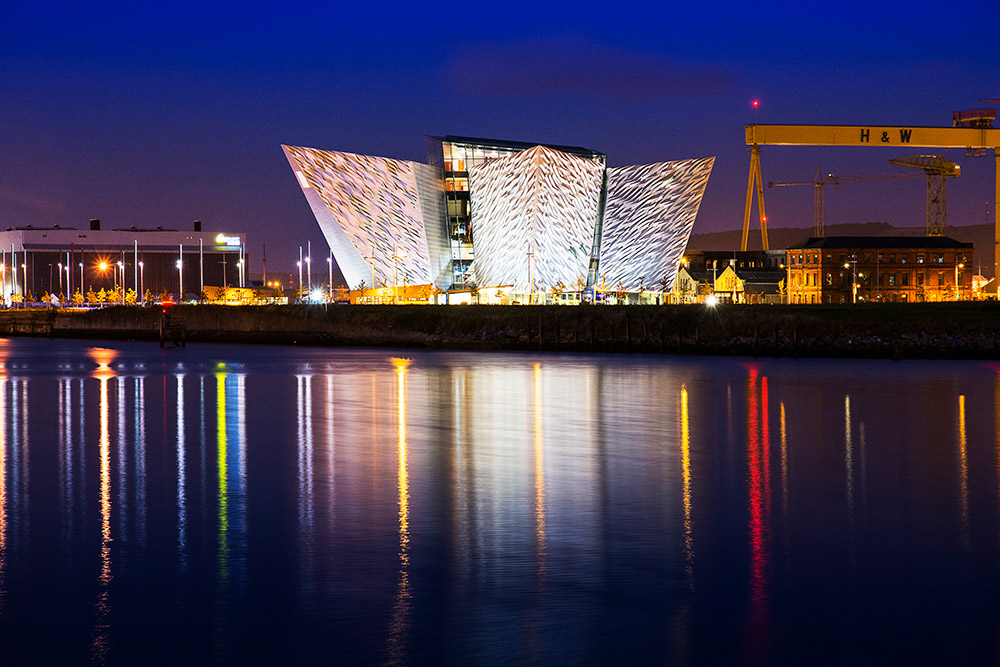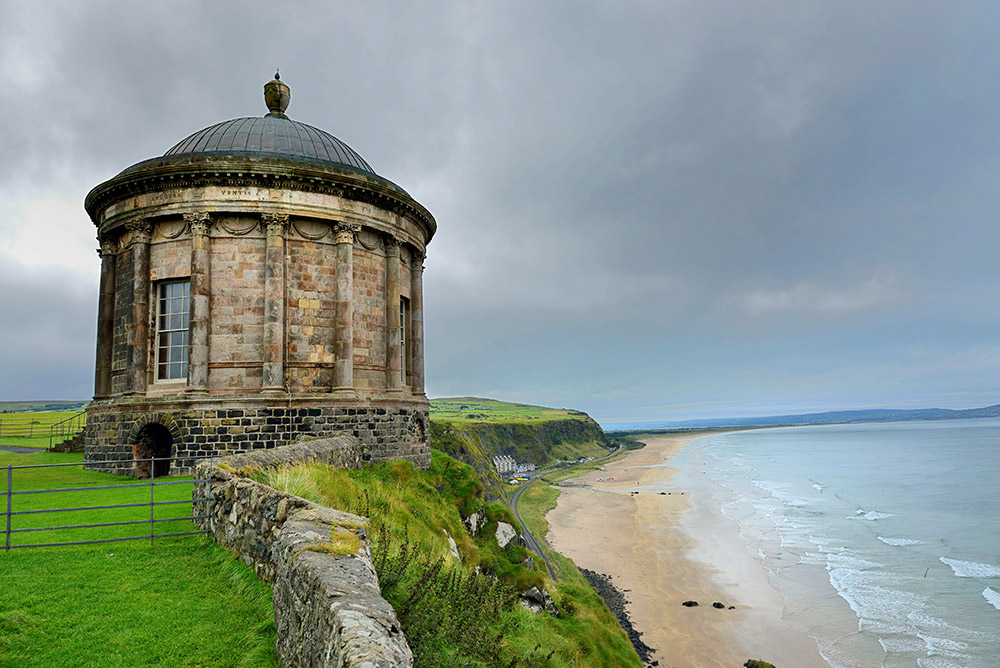Picking the UK’s top 20 most photogenic buildings and monuments is tough, but here’s our list – with tips and insight from pros and readers
London
St Paul’s Cathedral
EC4M 8AD (St Paul’s tube), www.stpauls.co.uk
London is full of photogenic buildings so it was a hard choice, but few things capture the spirit and dynamism of the ’ capital more than St Paul’s and the City skyline. ‘To get this shot I liased with St Bride’s Church in Fleet Street and shot from the tower – the view is dead on, so it’s worth getting in touch to see if you can also get access,’ says Graham Lacdao, official photographer of St Paul’s.
‘I used a 70-200mm Canon L lens at f/8, which is an ideal focal length. Get the best viewpoint you can: during the day, the most successful shots are from distant viewpoints with a zoom lens. If you’re much nearer to the cathedral, a tilt and shift lens is very handy.’
The Shard
SE1 9SG (nearest tube London Bridge), www.the-shard.com
The Shard is one of the most striking modern buildings in the capital and there are lots of great photo opportunities nearby. ‘I shot this from one of the piers on Tower Bridge – they don’t usually kick you off for having a tripod, so it’s rock solid,’ advises Jeremy Walker. ‘Timing is important: I took this just after sunset, which is a great time to shoot. I also used a 2-stop soft grad ND filter and opened up a few shadows in software.’
South East England
The Brighton Pavilion
Brighton BN1 1EE, brightonmuseums.org.uk/royalpavilion
Brighton is full of photography ideas, from the beach to the Lanes, but the Royal Pavilion is rightly popular all year round. The gardens are open every day, so there are lots of opportunities to shoot this iconic building.
‘Keep a look-out for the ideal conditions of soft light on partly clouded days or around sunset and sunrise,’ says local photographer Matt Goddard. ‘Soft light makes the Pavilion’s stonework glow with a soft warmth that needs to be seen to be believed.’ You can also get some really eye-catching reflections. Remember that tripods are not allowed inside the museum. NCP’s Brighton Theatre car park is three minutes away.
South West England
Stonehenge
Wiltshire SP4 7DE, www.english-heritage.org.uk
‘Here I created a five-shot vertical panorama using a 24mm lens at 3200 ISO to maximise the light, then stacked the images in Lightroom,’ says photographer and tour leader, Dion Hitchcock of UK Photo Tours. ‘Use a light pollution filter if possible. Earlier in the year will give you an arch on the Milky Way: the PhotoPills app is a big help.’ See bit.ly/stonehengefreepath for a guide to easy access.
St Michael’s Mount
Marizion, Cornwall TR17 0HS, www.stmichaelsmount.co.uk
Try a shot from the shore near Marizion. ‘I took this on a Hasselblad 500C/M with a Zeiss 80mm f2.8 lens along with a Formatt-Hitech Firecrest Ultra 4 ND soft edge grad filter to balance the exposure,’ says reader Matt Watkins. You can park at the St Michael’s Mount and Long Stay Marazion car park.
The Midlands
Selfridges
Birmingham B5 4BP, www.bullring.co.uk
Some modern buildings date quickly but this iconic structure is still looking fresh. You have a range of approaches: use a wider lens to capture the whole of the building, or zoom into the 15,000 aluminium discs and elegant curves. The latter can look particularly striking against a bright blue sky, so consider using a polariser to boost the colours and reduce glare. Pick your time too.
‘If you get there early enough, Selfridges makes for one of the best spots in the whole city to take in the sunrise,’ says photographer Dave Musson. Show shutter speeds will give attractive starburst effects on street lights. There is ample parking at Moor Street Car Park.
Lincoln Cathedral
LN2 1PX, lincolncathedral.com
Picking one cathedral was a challenge, but it’s a favourite of many experts, such as Simon Jenkins, author of England’s Thousand Best Churches. ‘Including the Tennyson statue gives foreground interest and he’s associated with the area,’ says photographer Derek Forss. ‘I shot handheld, using an Olympus 12-60mm lens at f/8 and 1/400sec, so I was able to move fast; with such a popular cathedral, there are usually people about to walk into the frame.’ There is free parking outside or several public car parks nearby.
Chatsworth House
Derbyshire DE45 1PP, www.chatsworth.org
Again, the choice of English stately homes is massive, but we picked Chatsworth as it’s at the heart of the equally photogenic Peak District, and is within striking distance of major conurbations including Manchester. For this image, Derek Forss included the iconic fountain for extra interest. ‘You often get a rainbow as the wind is blowing – it blows the spray from the fountain to one side, though at certain angles you can’t see it.’ Note that tripods are not allowed in the gardens, however. There is a dedicated car park.
The North East
The Millennium Bridge
Gateshead NE8 3BA, bit.ly/gatesheadbridgeinfo
This hugely photogenic bridge spans the River Tyne between the Gateshead arts quarter on the south bank and Newcastle’s Quayside area on the north bank, also encompassing many eye-catching buildings. Reader Rob Cole shot it with a tripod, using a Sigma 10-20mm (10-second shutter speed at f/16, ISO 100).
‘I set up before sunset and waited for the blue hour, slightly tilting the camera down to give a sense of stepping into the frame. The lines of the old iron railings and pavement kerbing lead nicely into the scene.’ Gateshead Quays are served by a range of council-owned and private car parks.
Hadrian’s Wall
suggest Cawfields NE49 9PJ, www.english-heritage.org.uk/visit/places/hadrians-wall/
It was a hard choice between this or the Angel of the North sculpture, but as the latter is also close to Gateshead, we went with the wall – it’s not too long a drive from the Lake District and North Yorkshire, either. ‘Where Housesteads Crags and Cuddy’s Crags meet is one of the iconic views of Hadrian’s Wall,’ says photographer Roger Clegg.
‘Views to the south take you across South Tynedale to the distant North Pennines. It is one of my favourite places – one reason is its tendency to early morning mist and fog. A wideangle lens is handy for dramatic images from close range while a telephoto will pull in distant views.’ Cawfields Milecastle has a Northumberland National Parks car park nearby.
Scotland
Calton Hill
Edinburgh EH1 3BJ, www.edinburgharchitecture.co.uk/newtown-dugaldstewart
Edinburgh Castle is a wonderfully photogenic building, but why not include it as part of the city skyline, taking in the Dugald Stewart Monument? ‘Calton Hill is a great Edinburgh location,’ says pro Jeremy Walker. ‘I shot this cityscape after sunset, when the street lights came on, using a 35mm lens for width, a tripod (the shutter speed was 15 seconds) and a LEE 0.6 ND filter. As I was on a hill and parallel to the monument, with the camera level, the lines were nice and straight.’ The Q-Park OMNI car park is close.
The Falkirk Wheel
Falkirk FK1 4RS, www.scottishcanals.co.uk/falkirk-wheel/
This eye-catching rotating boat lift connects the Forth and Clyde Canal with the Union Canal and opened in 2002 as part of the Millennium Link project. ‘This image was carefully planned, rather than just turning up,’ says AP reader John Cuthbert. ‘I chatted to the Falkirk Centre in the day and arranged to photograph the wheel at night, making security aware, and ensuring the lights were turned on – they were very helpful. I shot at 10 seconds at f/8, ISO 50, using a tripod on a Sony Alpha 99 with a 24-70mm Zeiss lens. I didn’t have to do much to the image apart from sharpening, and it has done well in compeitions.’ There is a main car park just a few minutes away.
The Kelpies
Falkirk FK2 7ZT, www.thehelix.co.uk
Yes, Falkirk again, but The Kelpies, the largest equine sculptures in the world, were another popular reader suggestion. ‘I took this shot early in the morning to get the best light and have the place to myself,’ says reader John Cuthbert. ‘I shot at 1/8th of a second on a tripod at f/10, using a 26mm focal length. The Kelpies are on a public right of way so there are no access issues, and you can walk along there at night too.’ There is parking at the Kelpies and Visitors Centre.
Eilean Donan Castle
Dornie IV40 8DX, www.eileandonancastle.com
Again, trying to decide on one Scottish castle was difficult, but this is one of the most beautiful, principally because of its location. Eilean Donan is situated at the meeting of three lochs, with the Highlands surrounding it. A wideangle lens is highly recommended to soak in the wonderful scenery and as with most of the buildings here, choose your time carefully – the blue hour is ideal.
‘Once the colour has disappeared from the sky you tend to get a nicely illuminated castle but the background fades to black with little detail so you don’t get the same beautiful surroundings in the shot,’ advises photographer Nick Cockman. There is a car park, which happily, also offers one of the best vantage points.
Wales
Millennium Centre
Cardiff CF10 5AL, www.wmc.org.uk
This one of the most widely photographed buildings in the capital, and it’s not hard to see why. It is the national arts centre of Wales, and a great source of pride, with some wonderful typography on its stunning façade – the building is a fascinating shape, too. ‘It’s a good idea to get there early in the morning to avoid passers-by, again using a longer lens, or you can take advantage of pedestrians by slowing them down via motion blur, or removing them altogther,’ advises AP’s features editor and Cardiff resident, Amy Davies. ‘A Neutral Density is great for achieving this without blowing out the exposure. The Centre is made from slate, metal, wood and glass and looks great against a clear blue sky, so consider using a polariser to deepen the blues.’ There are numerous car parks nearby.
Conwy Castle
LL32 8AY, cadw.gov.wales/visit/places-to-visit/conwy-castle
Conwy, built by Edward I between 1283 and 1287 as he took on Wales, is a classic Welsh castle. For this image, Derek Forss included Thomas Telford’s equally famous bridge to add interest. ‘Including it makes for a more interesting image than a conventional postcard view of the castle. I took this image handheld, at 1/200sec and f/8.’ There is a car park outside the castle.
St David’s Cathedral
SA62 6RD, www.stdavidscathedral.org.uk
This was taken in the graveyard of this beautiful church by pro Drew Buckley. ‘It’s an hour compilation (a 60x30sec image stack in StarStax) of stars rotating around Polaris. I shot during a full moon, which kept the sky blue (f/4, ISO 1250). Other good viewpoints are from the top of the steps, or from the path behind the gatehouse.’ Parking nearby.
South Stack Lighthouse
Anglesey LL65 1YH, bit.ly/southstackinfo
Lighthouse fans may berate us for not including more, but this is a classic. ‘I shot this at sunset in autumn, a great time,’ says reader Dibs McCallum. ‘The sunlight complements the colour of the vegetation, while the very clear water at this location gives a calmer look for long exposures. I shot on a Fujifilm X-T2 and the wide 10-24mm lens (f/8, 40 seconds, ISO 200).
I also used 100mm Formatt-Hitech Filters, which included a polariser and 3-stop soft grad filter and 6-stop ND. It can get windy there so please be careful.’ There is a large car park at the South Stack Visitors Centre.
Northern Ireland
Titanic Building
Belfast BT3 9EP, www.titanicbelfast.com
This jaw-dropping modern building is located exactly 100 metres in front of where Titanic’s hull was constructed and launched, so you really feel part of the fateful vessel’s history when you visit. You also get a strong sense of the long industrial heritage from the Harland & Wolff shipyard. The conventional approach is to shoot from the shipyard side of the river, but you can try shooting across the River Lagan from the Belfast city side.
The Titanic Building creates beautiful reflections, especially during the blue hour – you will get attractive starburst effects too. You’ll usually need a tripod or good image stabilisation if you are shooting handheld. Titanic Belfast has 520 underground parking spaces.
Mussenden Temple
Coleraine BT51 4RP, bit.ly/ntmussenden
You can capture some superb images of this ‘temple’ (built as an 18th century library) nestling in the surrounding North Coast headland. ‘From October to March, it’s a great location to shoot at any time of the day,’ says pro Tyler Collins. ‘When you’ve got one of those showery days with bright spells it works exceptionally well, as you can go for some real dark moody images.
It’s also a great location for astro photography; you do have some light pollution coming from the hills of Donegal to the east and from Castlerock to the west, but looking out north you have nothing but horizon.’ There is a car park at the nearby Downhill Demesne.
Recommended gear
We’ve covered a very wide variety of iconic structures in this feature, so which lenses and accessories will prove the most useful?
Lenses
An obvious choice for soaking up the subject within its wider context is a wideangle zoom. A good starting point is a 16-35mm (or equivalent), which is handy for both interior and exterior work. But many interesting buildings will also have fascinating details, and to capture these, especially if you can’t get close access, try a 24-70mm or 70-200mm zoom (or equivalent).
Tilt and shift lenses
Converging verticals/leaning-lines don’t look very professional, so for the slickest results, consider a tilt and shift lens. Wideangle 24mm lenses tend to be ideal for architectural exteriors, while wider optics are great for interiors. These don’t come cheap, however, with few choices under £1,500 – so try hiring one. See our recent round-up at bit.ly/aptiltshift
Filters
A neutral density filter can help to remove people from the scene if needed by using a longer exposure time, while a polariser can reduce glare from a reflective surface.
Tripod
A tripod’s useful if you want to shoot at night without resorting to using a high ISO speed. Many cameras now have powerful image stabilisation for shooting handheld.
Editing software
If you can’t stretch to a tilt and shift lens, both Lightroom and Photoshop have some powerful perspective-correction tools. Lightroom Classic’s Transform panel, found under Develop, has options including Auto (often very effective), Guided, Level, Vertical, and Full.
Related reading:
Revealed! The world’s best monument photographs
Best UK locations for capturing Autumn landscapes



